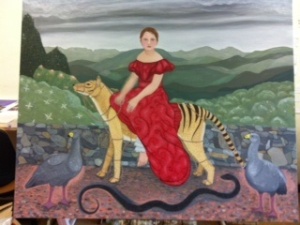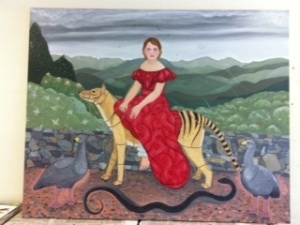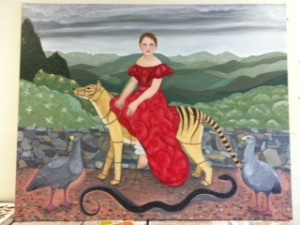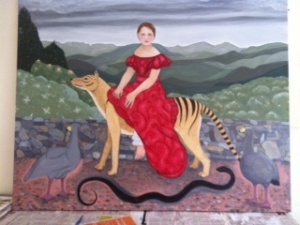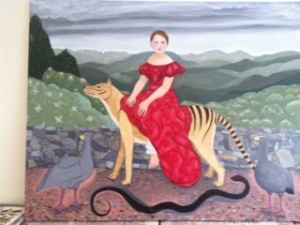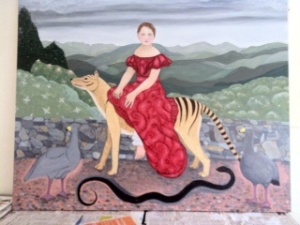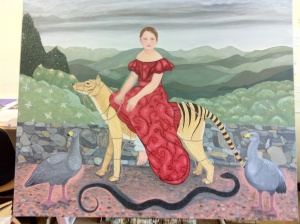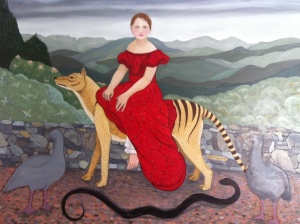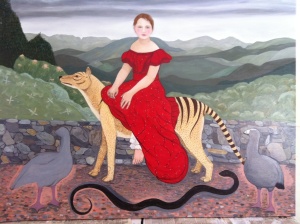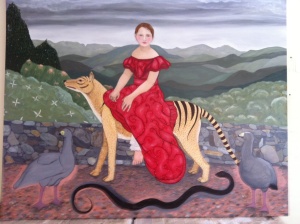The Tiger Bride is gradually being completed, or as it so often feels with a painting, finishing itself. Like the cycle of a typical love affair, images hit the stage where there is nothing more to be learned/nothing left to discover/nothing more to give, and this is usually when you decide the painting is finished.
These photographs were taken over a period of at least two weeks, possibly three, I’ve lost count. And to complicate things, they’re not necessarily in order…
The snake resembles the scroll at the bottom of a medieval manuscript, it was re-drawn to fix the weird flattish angle on the last curve from the left. I had intended for the snake to be facing the other way, as nearly every other creature is pointing left, but it wasn’t to be.
Deciding that the red of the dress was too flat a colour, and rather cliched, I moved it towards a rose pink. It now looks uncomfortably like bubbling lava or a river of blood.
The tiger sporting his bridle and natty harness.
I’m currently using reference material, for the dress and hairstyle, from Tasmanian colonial paintings. My favourite era was early on, before more skilled painters began to emigrate to the new colony. There’s a kind of freshness about the early stuff, an earnestly naive attempt to ‘get it right’ and follow the fashions of far away Europe, a well intentioned dislocation. In the early paintings, sleek racehorses float a few inches off impossibly green grass; a salon painter labours over the painting of a glass, a piece of lace, in a desperate attempt to show that he can ‘do it’; family portraits show each person from a slightly different perspective; and native animals are this weird concoction of familiar species: a kangaroo typically has the ears of a rabbit and the legs of a hound.

